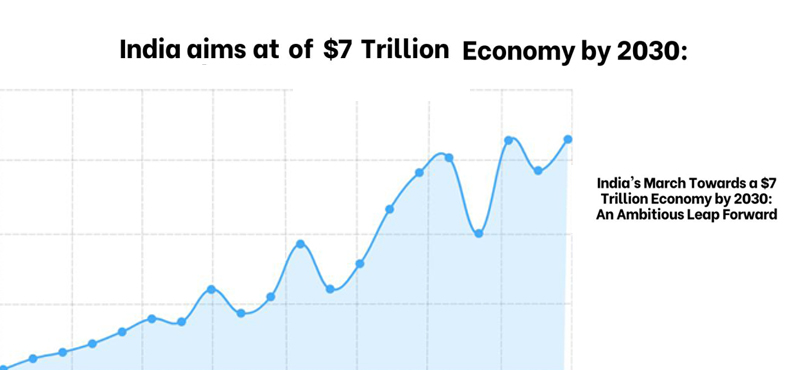
India's finance ministry has outlined a vision for its economic trajectory, aiming to double its GDP to $7 trillion by 2030. With a consistent growth rate of over 7%, backed by substantial infrastructure investment, a solid financial sector, and strong household finances, the ministry's review reflects a strong economic position, including healthy foreign exchange reserves, controlled inflation, and a reduced fiscal deficit.
India's economic journey has accelerated over time. It took six decades to reach the $1 trillion mark in 2007-08, then faster to $2 trillion by 2014-15, surpassing $3 trillion by 2021-22. Currently, the world's fifth-largest economy, India, is projected to rise to third place with an estimated GDP of $3.7 trillion by the end of 2023-24.
However, the path has been challenging. Economic slowdowns post-2014, the impact of demonetization, and the COVID-19 pandemic have delayed the goal of becoming a $5 trillion economy. To achieve the $7 trillion target, India needs to significantly boost its growth rate to a CAGR of 11.9% from 2023-24 to 2029-30, a considerable increase from the 6.7% CAGR seen from 2013-14 to 2023-24.
India must navigate global economic trends, such as developed economies' slowdown, protectionist policies, and geopolitical tensions, which could affect its export sector and overall growth. The IMF's cautiously optimistic outlook anticipates a 6.7% expansion for India in 2023-24, albeit below India's own estimates, signalling robust growth. As fiscal stimuli diminish, the onus shifts to private investment and strategic government budgeting to sustain expansion.
In conclusion, reaching a $7 trillion economy will require India to strategically harness its domestic market strengths and address global economic challenges. The country's economic potential and strategic growth initiatives indicate strong confidence in meeting this ambitious goal, even as it navigates complex economic and policy landscapes. The global community continues to watch India's progress with great interest.
 5 May 2024
5 May 2024